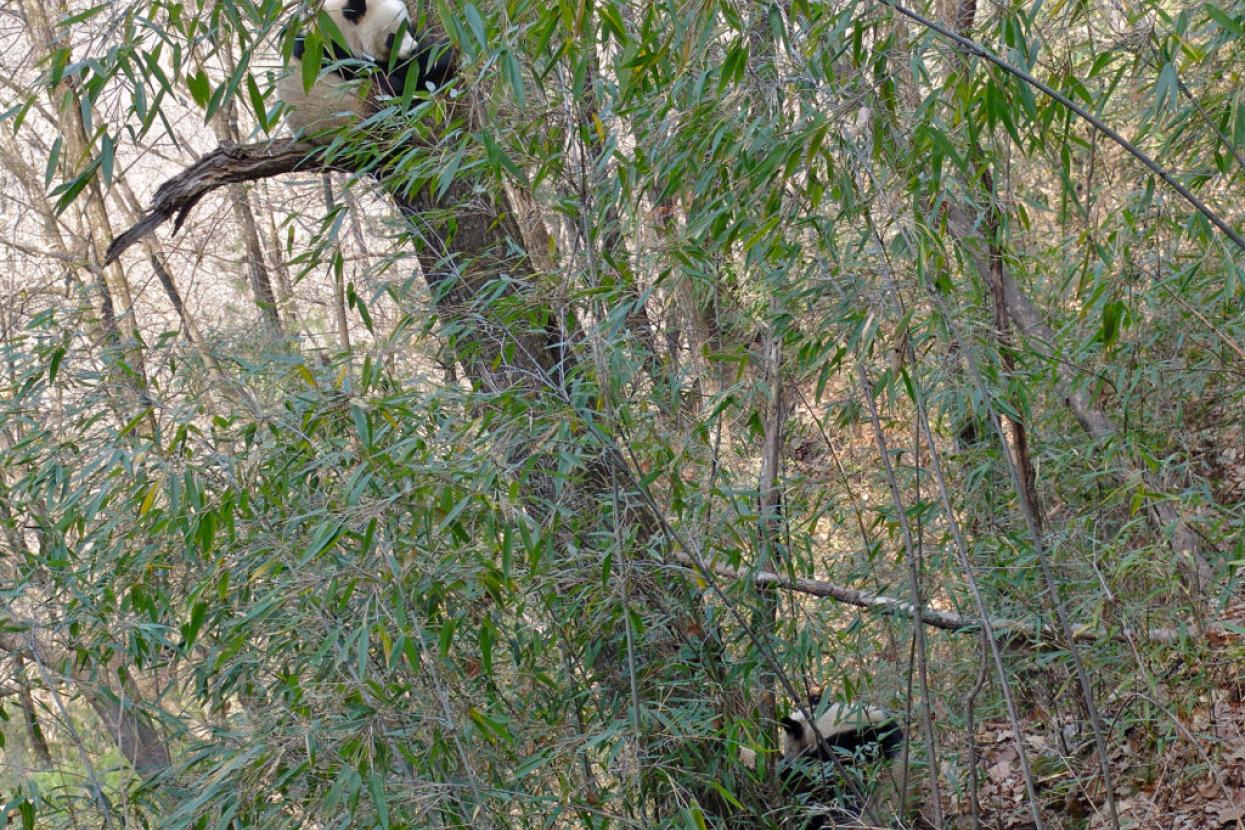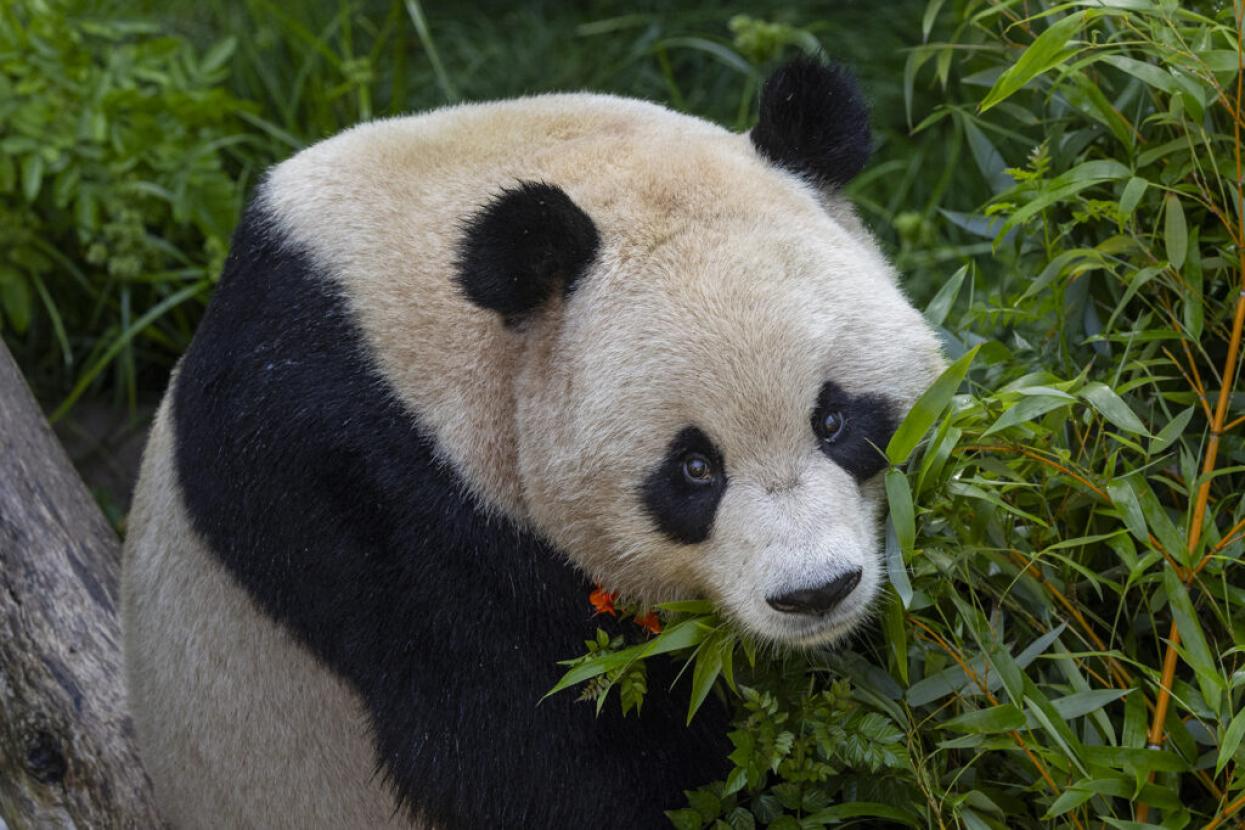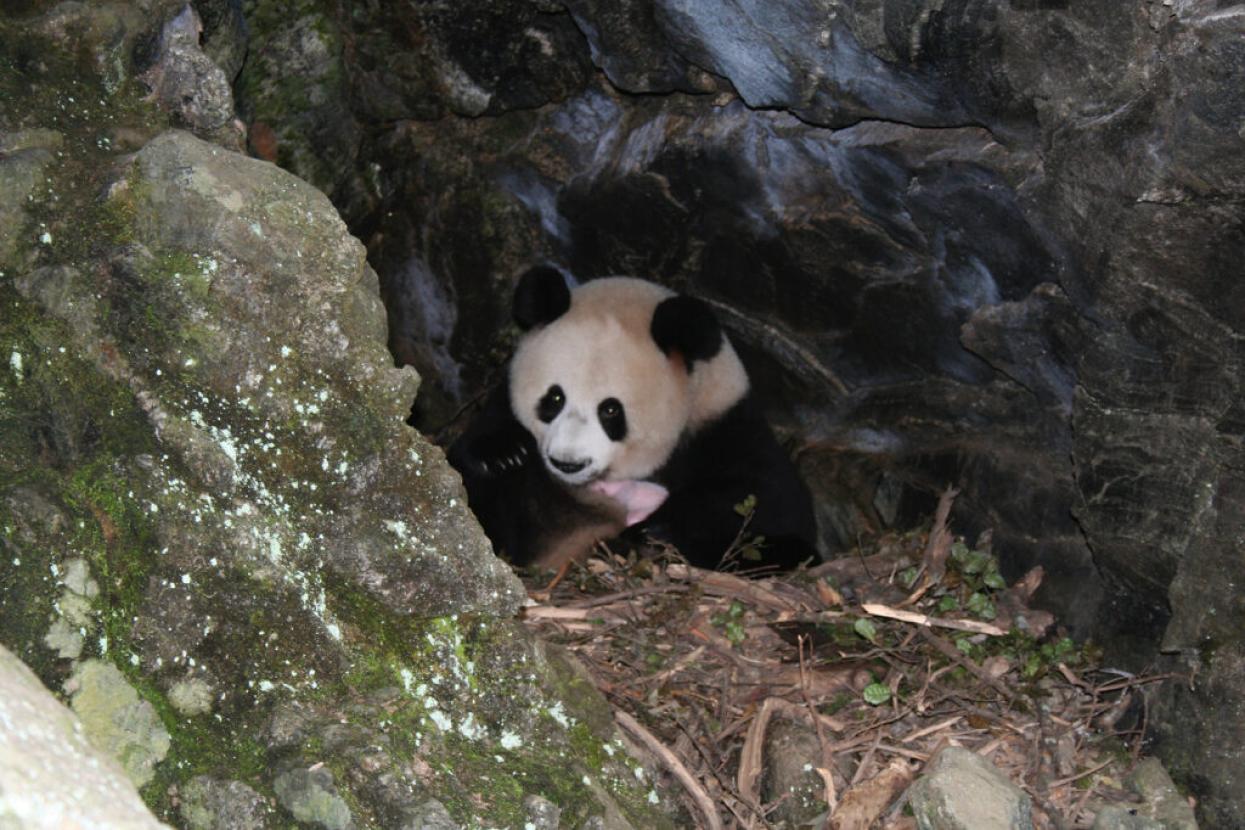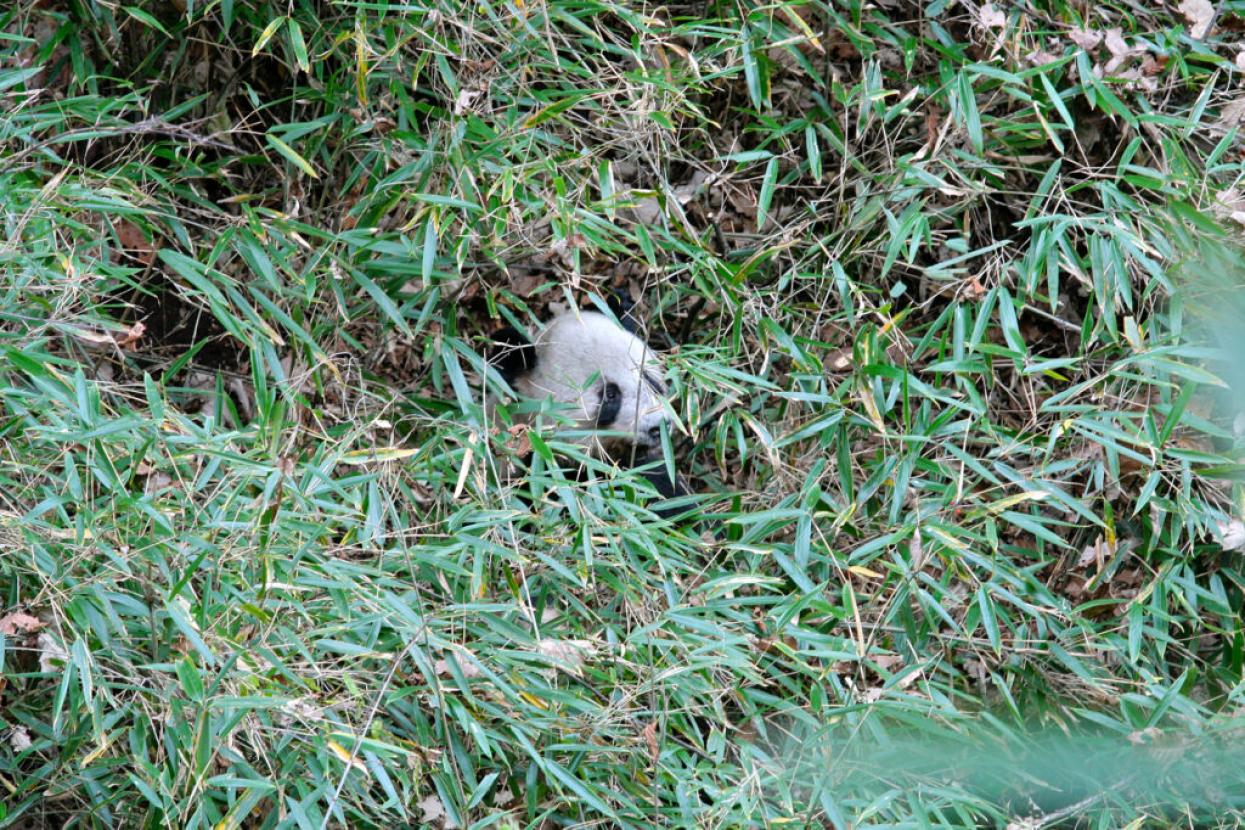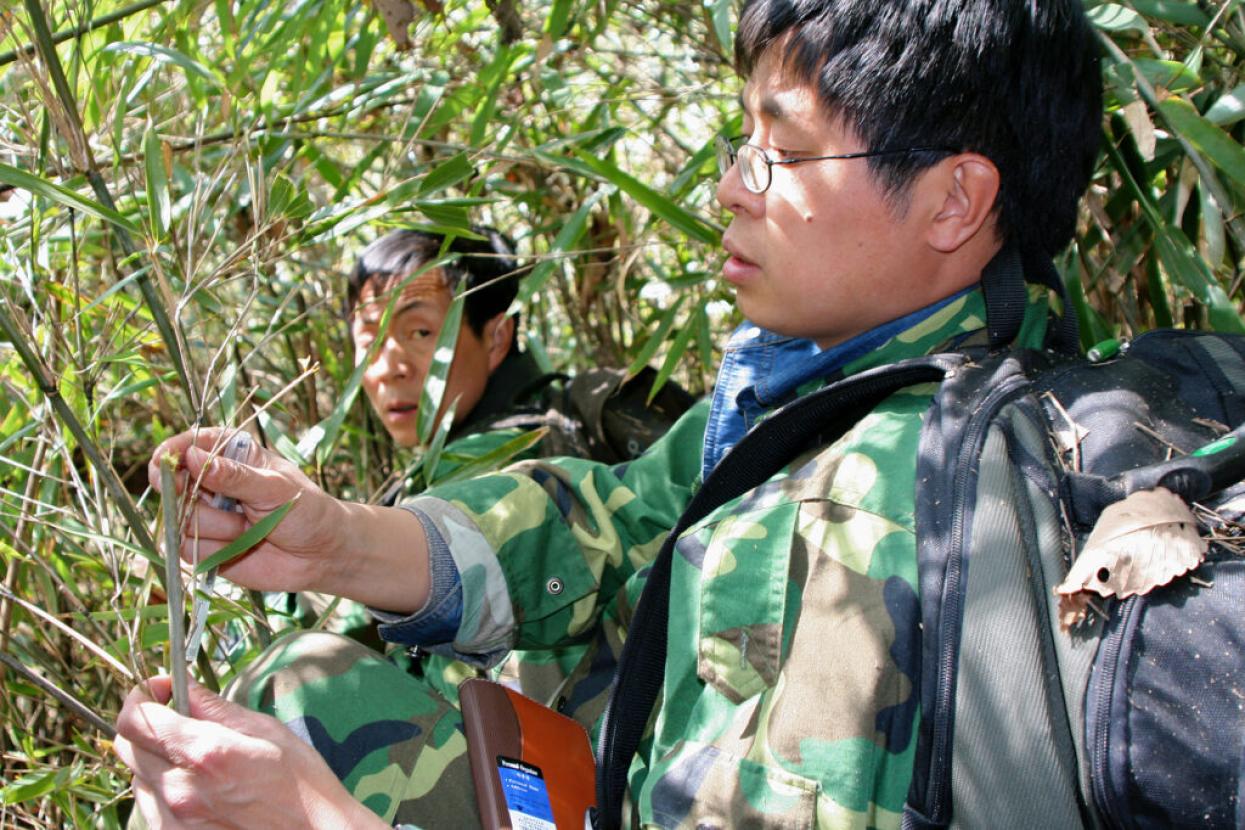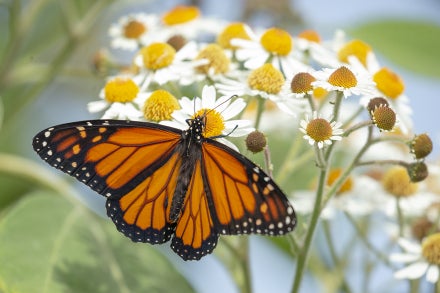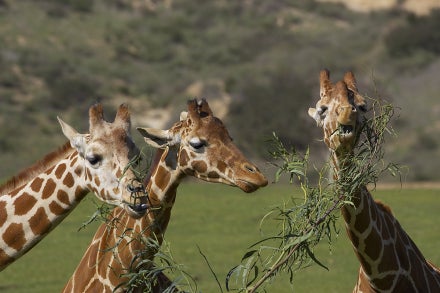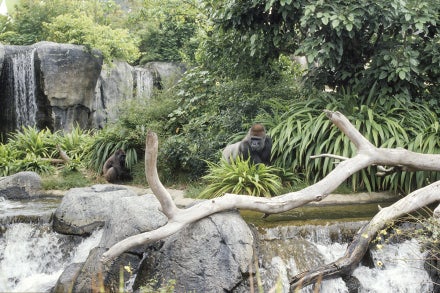
We’re doing the impossible. Or at least, what was once considered impossible.
Endangered by challenges including habitat loss, habitat fragmentation, and population isolation, the future looked bleak for the world’s favorite black-and-white bears just a few decades ago. Population counts dipped dangerously low as high-quality and connected habitats plummeted. Determined to help save giant pandas, we embarked upon an international, collaborative partnership with the Chinese Wildlife Conservation Association in 1994 and haven’t looked back since.
In the years that followed, we rallied around giant pandas and made great strides alongside our conservation allies. Working with our Chinese partners, we made critical findings in the areas of giant panda reproductive behavior and physiology, health, genetics, nutrition, habitat needs, and more. We developed a giant panda milk formula, and together with our partners, other neonatal techniques that drastically increased survival rates for nursery-raised cubs from less than 10 percent to more than 90 percent. We achieved the first successful artificial insemination of a giant panda outside of China in 1999. And we contributed valuable expertise to efforts led by Chinese scientists to study giant panda movement patterns at the Foping National Nature Reserve. By partnering together as allies, we made significant progress and found a glimmering thread of hope.
Giant pandas climb and forage in the Foping National Nature Reserve in China. Photo courtesy of Zejun Zhang.
When the International Union for Conservation of Nature Red List of Threatened Species reclassified the conservation status of giant pandas from Endangered to Vulnerable in 2016, we knew our collaborative efforts were making a difference. Then, in 2021, China’s environmental ministry also reclassified the panda’s status based on new and higher population counts, which had reached 1,800. This incredible milestone solidified our belief and strengthened our once-fragile thread of hope into a sturdy tightrope we could stand on.
Now, as we look to the future, our vision of a world where all life thrives inspires us to continue moving forward. We envision fully flourishing ecosystems with abundant, sustainable populations, not merely recovering ones. To achieve long-term sustainability for giant pandas and ensure panda populations thrive for generations to come, there’s still much work to do. We must now weave together the strands of hope we’ve gathered in the last three decades, eliminating any potential gaps to create a seamless fabric for their future.
Yun Chuan, peering over bamboo leaves at the San Diego Zoo, brings great hope for the next generation of giant pandas.\
Tomorrow Begins Today
Our teams of conservation scientists have already begun collaborating with our partners in China to identify those potential gaps and develop sustainable solutions. Leveraging innovative techniques and cutting-edge technologies, we aim to address the most pressing current threats: habitat fragmentation, population isolation, livestock grazing, the spread of livestock-borne illnesses, infrastructure development, and climate change. Collaborative, strategic planning will guide our work to comprehensively care for the well-being of giant pandas, people, and the ecosystems we share.
A scientist uses radio signals for giant panda spatial ecology research.
A key part of population sustainability is caring for both individual and population health among giant pandas in leading zoos and conservation centers. In the coming years, we aim to expand our knowledge of giant panda health by pursuing advancements in computed tomography (CT) scans, research surrounding cardiac health, and studies on possible conditions impacting geriatric health; researching reproductive readiness; and developing enhanced technologies to support more robust health assessments of giant pandas in their native habitats.
The application of new technologies could also play a major role in how we observe giant pandas in their native habitats. In the mountains of southwestern China, giant pandas traverse through dense forests and rugged, often snowy, slopes. These landscapes can prove challenging for people to navigate, especially while simultaneously attempting to observe giant pandas. By leveraging autonomous, multimodal sensors, technology could be our eyes, ears, and even “hands” on the ground for remote observation and sampling.
A giant panda mother cradles her newborn cub in their den within the Foping National Nature Reserve.
Sensor technology could provide new insights in several ways. Trail cameras, already used extensively by scientists for biodiversity surveillance, offer “eyes” on the ground through photos and videos. Acoustic sensors tune in to the ecosystem’s soundscape, providing “ears” on the ground to listen to wildlife. Together these technologies could produce millions of photos and recordings to comb through. That’s where other emerging technologies, like machine learning and artificial intelligence, come in. These tools can quickly and efficiently analyze a large volume of data, identifying which species are present in a fraction of the time of traditional methods.
After analyzing the data from our “eyes” and “ears” on the ground, a third method of information gathering, environmental DNA (eDNA) sampling, could offer a high-tech kind of “hands” on the ground. eDNA sampling would produce physical samples from the soil, air, or other materials that scientists could then investigate. Samples could reveal if pandas were present in the area, the level of local biodiversity, and if any endangered or invasive species live there. Combined with photos and recordings from the ecosystem, the data from these samples could offer a rapid, noninvasive, and cost-effective method to learn detailed knowledge about panda distribution, ecosystem biodiversity, and health.
It can prove challenging to find giant pandas obscured by bamboo leaves in their native habitats.
Giving Our Best
To accomplish these goals, San Diego Zoo Wildlife Alliance conservation scientists will continue working in partnership with Chinese Wildlife Conservation Association scientists, both in China and in San Diego. This partnership amplifies our efforts through information sharing and maximizes the strengths of everyone involved. For instance, as our Chinese partners prepare giant pandas for reintroduction to their native habitats, our team may contribute to strategies for prerelease training. By providing young giant pandas with the chance to learn the behaviors they will need to thrive in the wild, we can offer them opportunities to build their skill sets in a familiar environment.
As we continue to work together and learn together, we have great hope for what the future might hold. “I’m hopeful because we have this incredible track record of collaboration,” said Dr. Megan Owen, vice president of conservation science at San Diego Zoo Wildlife Alliance. “We’ve demonstrated that when we collaborate, we can achieve great things.”
Former SDZWA postdoctoral researcher Zhang Zejun conducts field research on giant panda bamboo foraging.
In addition to collaborative partnerships and innovative technologies, public support makes a world of difference. Climate change continues to threaten panda habitats, and therefore, their survival. But we can all stand together and make changes that add up to make a big impact. “We can’t let our guard down,” said Megan. “We have to continue to adapt to the changing scenario for giant pandas with the tools we have available.”
By continuing to develop and leverage new conservation strategies and tools fueled by our commitment to a world where all life thrives, we’re creating models of wildlife conservation that have the power to save countless species and habitats around the world. “Given how much people love giant pandas and how much they support them, they’re sort of a litmus test for our commitment to conservation,” said Megan. So, as we find and develop conservation solutions that have potential applications for other species, we can multiply our impact by applying those solutions for other ecosystems. “Whether a kangaroo rat or giant panda, we want to do our best by wildlife,” said Megan. That means giving our best effort every day. Not just for giant pandas—but for all wildlife around the world. Until they’re all here to stay.
To join us as an ally for wildlife, visit sdzwa.org today.

